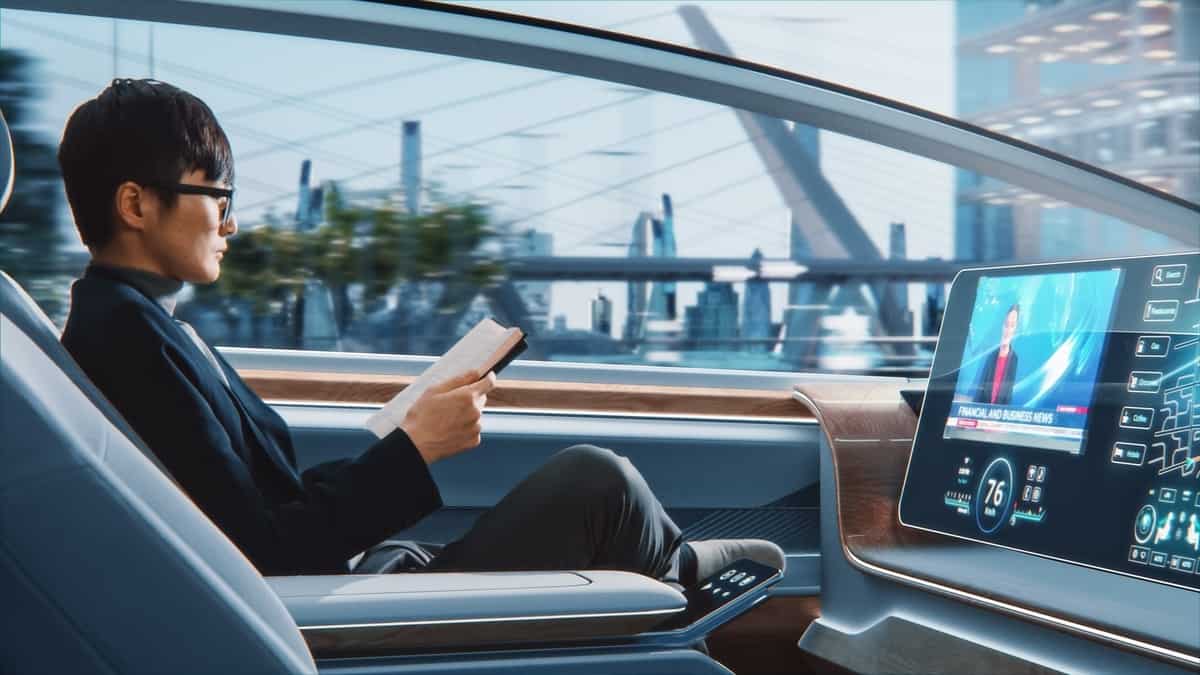According to claims made by a senior engineer at the company, a Tesla video showing the automaker’s self-driving capabilities is fake.
The video was posted on a still-accessible blog in 2016 under the title “Full Self-Driving Hardware on All Teslas.”
The screen blinks with text reading, “Before the nearly four-minute video begins,” “Only for legal purposes is the person in the driver’s seat. He is not acting in any way. The vehicle is self-driving.”
In the song of the Rolling Stones’ “Paint it black,” the video shows a Tesla moving out of a driveway, stopping at intersections and red lights, traveling on a highway, transferring a person to an office complex, and then parallel-parking itself. The driver’s hands are hovering beneath the steering wheel throughout the video.
Tesla drives itself, Elon Musk said
However, Ashok Elluswamy, director of Autopilot software at Tesla, stated in the transcript of a July deposition that served as evidence in a lawsuit against Tesla for a fatal crash in 2018 involving a former Apple engineer that the Model X was not operating by itself.
Elon Musk, the company’s CEO, tweeted about the demonstration and said, “Tesla drives itself (no human input at all).” But now, a senior engineer claims that the video is fake.
The testimony by Elluswamy, which was previously unreported, marks the first time a Tesla staff has confirmed and explained how the video was made.
Tesla’s Autopilot team, according to Elluswamy, was tasked by Musk with creating and filming a “demonstration of the system’s capabilities.”
A deposition from Ashok Elluswamy, the organization’s director of Autopilot software, was cited in the news outlet as part of a lawsuit involving a driver’s death in a Tesla in 2018.
The intent of the video was not to accurately portray what was available for customers in 2016. It was to portray what was possible to build into the system
Elluswamy’s deposition in the transcript
Tesla technology is said to help with driving
According to Elluswamy, the vehicle in the video traveled along a predetermined route when drivers took over during test runs.
He further testified that a test vehicle crashed into a fence in Tesla’s parking lot while attempts were being made to demonstrate the Model X could park itself without a driver.
According to the company’s website, the Tesla technology helps with steering, braking, speed, and lane changes, but its features “do not make the vehicle autonomous.”
From home in Menlo Park, California, to Tesla’s then-headquarters in Palo Alto, he said, the Tesla used 3D mapping on a planned path to creating the video.
Lawsuit for Tesla’s system
Tesla’s driver assistance systems are the subject of lawsuits and regulatory scrutiny.
Citing unnamed sources, the New York Times reported in 2021 that Tesla engineers had produced the 2016 advertisement for Autopilot without disclosing that the route had been pre-mapped or that a car had crashed while attempting to complete the shoot.
Walter Huang, a 38-year-old Apple engineer, died in 2018 after his Tesla slammed into a highway median on California’s Highway 101.
Elluswamy’s testimony was taken as part of a lawsuit concerning Huang’s death. Huang’s widow filed the case, which claims Tesla misrepresented the safety of its self-driving systems.
After a series of crashes, some of them fatal, involving Autopilot, the U.S. Department of Justice launched a criminal investigation into Tesla’s claims that its electric cars can drive themselves in 2021.
According to the lawsuit, due to Tesla’s “claimed technical superiority regarding the vehicle’s autopilot system,” Huang believed his Model X “was safer than a human-operated vehicle.”
The automaker allegedly added safety features to the assisted-driving system after Huang passed away, including the capacity to change lanes autonomously, shift focus from one freeway to another, exit the highway, and activate automatic emergency braking.
According to the lawsuit, these features could have spared Huang’s life.
Tesla received more filed lawsuit
The trial for the Huang family sets the lawsuit for March. Many families of deceased drivers have filed lawsuits against the company.
According to the Associated Press, 35 crashes involving Teslas have been the subject of investigations by traffic safety authorities since 2016. Nineteen people have died in these crashes.
Asserting Elluswamy’s in July, Huang’s wife’s attorney Andrew McDevitt said it was “obviously misleading to feature that video without any disclaimer or asterisk.”
The National Transportation Safety Board determined in 2020 that Huang’s fatal crash was because of his distraction as well as the limitations of Autopilot.
According to the report, the crash was partly caused by Tesla’s “ineffective monitoring of driver engagement.”
Drivers could “fool the system,” according to Elluswamy, by deceiving a Tesla system into thinking they were paying attention by providing false feedback from the steering wheel.
However, he claimed that if drivers were paying attention, he did not believe Autopilot posed a safety risk.

